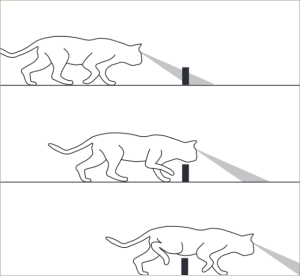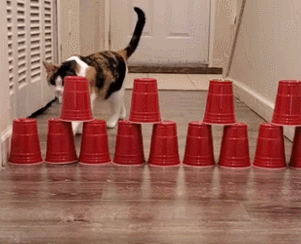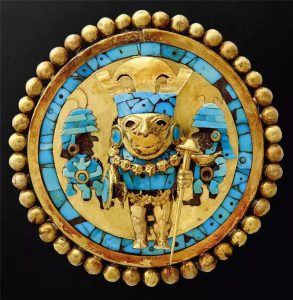Cats have an incredible ability to avoid obstacles. But why are they so good at effortlessly dodging obstacles?
-
Cats Don’t Trip While Walking
Cats have an incredible ability to avoid tripping while walking. When they approach an obstacle, their eyes will already have identified it, allowing them to step over it with ease without needing to reassess its position or height. This is quite different from humans, who typically lower their heads to look at an obstacle while walking, especially when encountering stairs. Cats, on the other hand, have a built-in “obstacle memory.” After lifting their front paws, they remember how high they raised them and bring their back paws up to the same height to easily cross the obstacle. This memory, which prevents them from bumping into things with their back paws, is known as “obstacle memory.” This ability allows them to maintain balance and avoid tripping. During normal walking, the interval between the lifting of the front and back paws is just 0.8 seconds, so the “obstacle memory” typically lasts about that long. But what happens if a cat’s walk is interrupted while crossing an obstacle? Will its back legs still “remember” the obstacle?

-
Do Cats Forget About Obstacles?
A study by the University of Alberta’s Department of Psychology in Canada, conducted in 2006, explored how long cats can retain obstacle memory.Experiment 1: Testing the Duration of Obstacle Memory.The goal was to test how long cats can remember an obstacle after their walking is interrupted. The experiment involved placing an obstacle (7.2 cm high) in the middle of a path and allowing the cat to cross it. While the cat was crossing, its walking was interrupted by food. After the interruption (ranging from a few seconds to several minutes), the obstacle was quietly removed, and food was used to encourage the cat to continue walking. The researchers observed whether the cat would still raise its back legs at the same height as its front legs at the spot where the obstacle had been.Results: Even after being interrupted for 10 to 200 seconds, cats were still able to raise their back legs to the same height as their front legs and move as if they were crossing the obstacle. In some cases, the cats maintained the memory for up to 10 minutes.Experiment 2: Testing the Precision of Obstacle Memory.The second experiment tested whether cats could accurately remember the positions of multiple obstacles. A second obstacle was added to the path. The cats crossed both obstacles with their front paws, and their walking was interrupted by food. After the interruption, they were again encouraged to continue walking.Results: The cats were able to remember the locations of both obstacles and the distance between them. They successfully crossed both without any issues. This shows that cats’ memory of the position, size, and height of obstacles is not significantly affected by a short break in their walking.
-
The Role of Obstacle-Avoidance Memory in Cats
Avoiding Predators: Cats are naturally cautious animals. Any sound or movement gets their attention, and they try to hide to avoid being noticed or attacked. Their obstacle memory helps them stay quiet and move stealthily.Catching Prey: When hunting, cats need to avoid making noise while moving, as stepping on an obstacle might alert their prey. Cats’ ability to remember obstacles allows them to move smoothly and avoid making noise, which is crucial during hunting. Even domestic cats retain this ability, helping them avoid running into obstacles when they can’t see them with their eyes.But if cats have such strong obstacle-avoidance skills, why do they still “accidentally” knock things over? This is likely due to their innate curiosity or boredom, and sometimes they might just be “doing it on purpose.”
Does Your Cat Cross Obstacles?Feel free to share your thoughts, pictures, or stories in the comments! Let’s exchange tips and experiences about our cats’ amazing skills.





